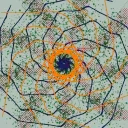

Always has been 🌍 🔫


Always has been 🌍 🔫


Geneva’s checklist


from defending itself against Hamas before Israel achieves meaningful security goals
Please explain to me, in what world “defending against Hamas” (which are islamist terrorists) and “achieving meaningful security goals” includes bombing a Greek Orthodox Christian church?


Everything, not everyone
Are “human animals” things or ones?
Nope. The topic at hand is free ice-ceam. A topic that you, as a rational adult, can understand that is 100% literal and not at hyperbolic example to make a point about general trends and not a single specific item.


The US FCC defines ionizing radiation as wavelengths smaller than 124 nm (which corresponds more or less to the ionization energy of both oxygen and hydrogen, so it is a sensible definition).
The “most starlight” part is a bit trickier. Stars emit light in a wide spectrum (approximately black body radiation) depending on their temperature: hotter stars emit bluer light and are more luminous, but very rare, while cooler stars are redder and fainter, and much more common. Yellow stars (spectral type G), like the Sun, emit mostly between 400 nm and 750 nm (visible spectrum), while red stars (spectral type M) mostly emit from 700 nm to 1000 nm,
So let’s say that you want all the light with wavelengths of 1000 nm or smaller turned into ionizing radiation. That gives us a blue-shift of 1+z = lambda_obs/lambda_em = 124 nm/ 1000 nm = 0.124.
The relation between speed and blue(/red)-shift is given by the relativistic Doppler effect:
1+z = sqrt((1+beta)/(1-beta))
where beta=v/c and c is the speed of light. Solving for beta
beta = ((1+z)^2 -1)/((1+z)^2 +1)
And plugging the numbers, you get beta = -0.970, where the minus sign means that you are moving towards the star. At 97% of the speed of light.
If you only wanted to turn most of the sunlight into ionizing radiation, you would need “just” 94.7% of the speed of light.
It is a f-string


Wow, that number is quite amazing. 22% of American Jews in 2021 thought that the 2023-24 military campaign is a genocide. So at least 22% of American Jews are time travelers!


You should ask Nepo or Dubov

The plot was semi-historical, so it could have ended with Stede’s demise.


Fedora 39 is clearly superior to Ubuntu 23


Is Ben-Gvir already asking for his “voluntary” transfer outside of Israel?
Same as Windows 9


There are many room-temperature semiconductors, for example silicon.
Meissner effect is related to superconductors


Other countries can email them at ethnic.cleansing@israel.gov


I have a few ideas


but after first purchase her assets go up to 1.5bil and his assets go to .8bil
Nope, his assets go to $0, as they belong to her now. What you propose is the economical equivalent of a perpetual motion machine


No. It’s a conflict in a highly urbanised area with one side (hint: Israel) deliberately bombing targets to cause as many civilian casualties as they can
https://www.972mag.com/mass-assassination-factory-israel-calculated-bombing-gaza/
deleted by creator